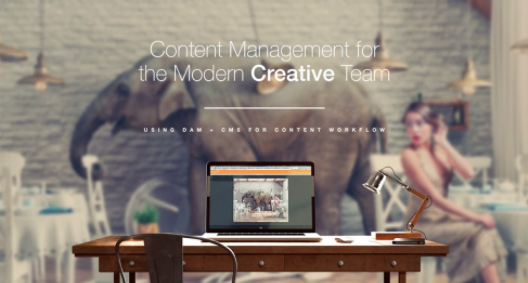How media libraries help ensure brand consistency
| October 25, 2017

Strong brands command a premium. But to realize premium value, your brand must gain significant purchaser recognition to establish trust and speed purchase decisions. Purchaser recognition is premised on consistent portrayal of your brand – from brand story to brand personality to brand elements – across all company/consumer touchpoints. Without it, the harmony in your brand can quickly drift out of tune, or even collapse into cacophony.
Single source of truth
A leading tool to help ensure brand consistency across channels is a single source-of-truth media library like Canto. A media library is a system that can store, organize and share digital brand assets that your company needs to manage. These consist of the images, videos, color schemes, logos, presentations and collateral that form your brand’s core identity and visual style.
With such a media library, you can place all your brand assets into a portal for sharing across marketing teams or your entire company. Once supplied in an easy and accessible location, everybody knows where to go for brand identity materials, or the newest tweaks to your current campaign. This keeps everyone on the same page, and cuts down logo and image requests, because most people are more than happy to self-serve and reduce their wait times. It also helps avoid such outcomes as the employee who, short on time and patience, sends out a hacked-together version of your company’s logo, or uses an outdated template for media presentation.

Multichannel marketing
Broadcasting your message across a multitude of channels exponentially increases brand consistency challenges. It takes a pretty robust system to ensure that the right logos, graphics, offers (and even languages) appear in the right places at the right times, available to the right external stakeholders, partners and suppliers. The value of a media library really cannot be underestimated here. Just one partner misuse of a logo or image can disrupt a big campaign.
One way to leverage a media library against this risk is to set up external campaign portals by channel, country or region, and provide access rights only to those who need them. Your marketing team administrates and maintains oversight over the whole production, selectively limiting view and access by outside parties. This isn’t a complicated knot of permissions within nested folders. It’s just intuitive drag and drop, with fine-tuned controls as you need them (such as global or asset-level expiration dates). This takes work off you and delivers peace by mind as partners learn where to go for the assets they need to help your message march across broadcast, ad networks, digital and print collateral and/or in-store.
Social media marketing
One marketing channel that deserves special attention with regard to brand consistency is social media. This is where many companies can go astray, because they tend to let their hair down on social media, as imagery and tone becomes personalized to the person posting. If posted images and voice drift too far, your social media presence can disconnect from your core brand and create consumer confusion.

One sure way to keep social media in check is to use social media integrations within a media library. This allows social media marketers to augment their brand judgement with pre-approved imagery. How nice to inherently avoid the legal jeopardy that can occur from a social media marketer pulling an image down direct from google search, and posting it in the name of your company.
Copyright, usage restrictions and watermarks
Little appreciated among brand consistency tools are copyright and watermarking. Traditional file storage and google drive lack ready access to this kind of asset metadata. Yet with media libraries, teams can locate approved images relevant to their needs, while at the same time easily tracking their copyright and usage restrictions. A publicized dispute or adverse decision over wrongful use can quickly damage trust in your brand. Much better to know the boundaries of image use in the first place, and avoid risky guesses.
Last, the use of watermarks for images distributed to partners and suppliers can limit downstream brand consistency problems, by stopping print-ready and high res digital assets from going into inadvertent circulation. The brand consistency cost of tracking down just one asset mistakenly “let into the wild” can be substantial. No one wants a big campaign damaged by a premature message leak. Watermarking is a core feature of media libraries that can reduce this kind of risk.
Your brand is a trust
Your brand is a trust, and needs protection. Media libraries help ensure the integrity of your brand, so that you can reach new sales heights.
